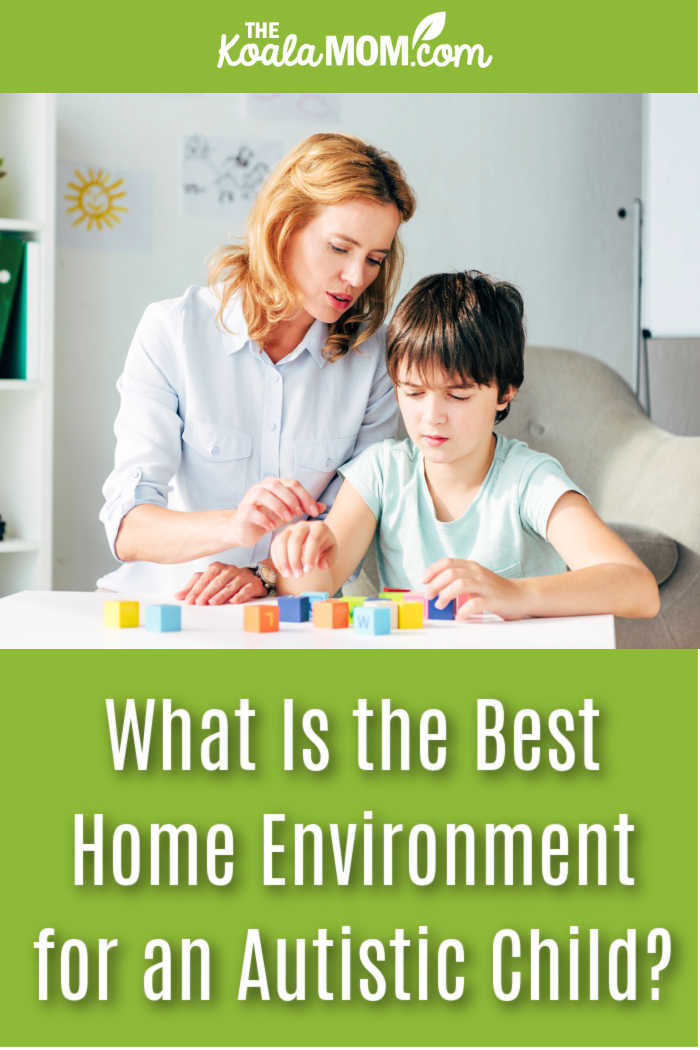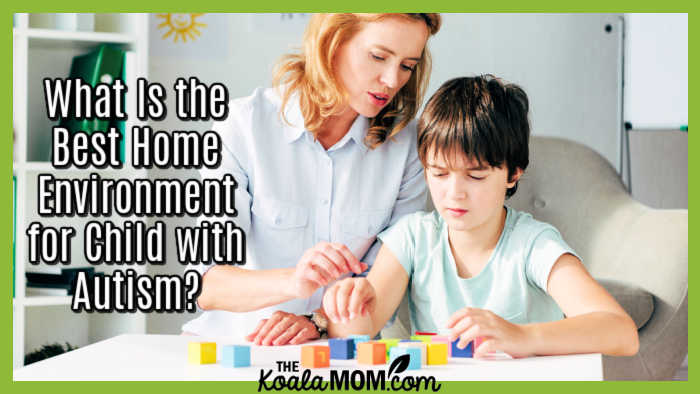Being the parent of an autistic child can sometimes feel overwhelming. Parenting any child — neurotypical and neuerodiverse alike — is fulfilling and challenging. Each child is different, and so their needs are different. Still, one common factor they share is the need to live in a supportive and accommodating home environment.
To be able to create the best home environment for a child with autism spectrum disorder (ASD), you will need to pay attention to that child to understand what their needs are and what they react to — both positively and negatively. As a parent, you create a nurturing home environment in many ways, giving the child a sense of security and love. Let’s unpack some ways you can approach this.

Understand Autism
Every child is different, and to make a home the best environment for an autistic child, you must understand autism properly. Autism is a spectrum, and people with this disorder can have various characteristics and symptoms. Some people have few symptoms, while others have more severe and noticeable symptoms.
Children with ASD usually have difficulties with social interaction and communication. If you have questions regarding autism after reading this article, you should consider visiting ABA center in Michigan to get more detailed answers from professionals.
If you are caring for an autistic child, it is crucial that the child always feels at home. Below are some ways you can create a home environment for autistic children.
Communicate Effectively
Most children with ASD struggle with verbal communication, so you have to pay attention to more than what they say. You should also consider using sign language, images, or communication applications to improve communication. The preferences of the child should determine your means of communication. Give them room to communicate with you using the means they are most comfortable with, and — in return — communicate with them in the same way.
Children with ASD may also struggle with some of the subtleties of language, so it’s best to be very direct with them. My friend whose son is autistic says that if she tells him, “Hey, could you please unload the dishwasher for me?”, then he thinks that request is optional and likely won’t do it. However, if she tells him, “Unload the dishwasher,” he is better able to understand and do it.
Create a Social Environment
Autistic children often experience difficulties with social interactions. One way to help them overcome this and build social skills is to make your home as social as possible. You can start by inviting peers or organizing group activities to create a social home environment. You may want to start with a small group (perhaps one good friend) and then work up to larger groups or different activities.
Monitoring your child’s responses and understanding that results may be slow is important. Do not put pressure on your child; your priority should be their comfort, so ease them into the process and make sure they know they can opt out of socializing whenever they want to. For example, guests can remain downstairs or in the living room and, if your child needs a break or some quiet, he can go to his room without needing to make excuses.
Set up a Home Routine
Autistic children often find things easier when working with a schedule; that way, they can know what to expect and how to prepare for their daily activities. A daily schedule typically includes mealtime, study time, playtime, bedtime, etc. A balanced schedule provides them with structure.
You can create a visual representation of the schedules to keep the routine effective. This will keep the child interested. Remember that when you need to change schedules, you should communicate with your child and ease the transition.
Cater to Sensory Sensitivity
Some ASD children react negatively to certain lighting conditions and sounds, while others seek them out. You must work to know and understand your child’s sensory needs and act accordingly. This gives a better idea of what to avoid and include in his home environment.
You can use things like headphones, custom lighting, fidget tools, and lots more to create the best home environment. Sensory integration therapy is also beneficial for kids seeking specific sensory stimulation.
Increase Safety and Accessibility
The physical environment has to be safe and easily accessible to the child. This involves giving them access to the rooms they ought to have access to, giving them a sense of freedom and safety. However, remember that while creating a home that feels accessible, it must also be safe; keep harmful or sharp items out of sight to prevent injuries until they reach a stage where they can look after their well-being more independently.
Always Ensure Family Support
If you have other children, giving all your attention to your autistic child can sometimes backfire because it will keep them feeling like something is wrong with them. All your children should receive your attention, love, energy, and time. This doesn’t necessarily mean you should share your attention equally, but it should always be fair.
Encourage Independent Skills
An environment that teaches life skills will be helpful in the life of a child with autism. Depending on the child’s age and developmental level, these skills might include clothing, grooming, feeding, and basic domestic tasks like loading the laundry or watering the plants.
You should teach these skills with steps and clear instructions. Visual aids, such as workboards with step-by-step directions, can be very beneficial, no matter how simple you think the task is.
Set Out Coping Mechanisms
Autistic children often battle to keep their emotions in check and control how overwhelmed they can be. To help them feel less overwhelmed, you can help them to develop a coping strategy. The home should be one of the best places to execute those coping strategies.
The best home for children with autism is one that aids their growth and development while still factoring in their needs. To create the best home for ASD children, you must know their strengths and weaknesses, likes and dislikes, and what they react to. Caring for young ones with autism can be challenging and fulfilling; it’s about striking a balance with your child.


No Responses Yet